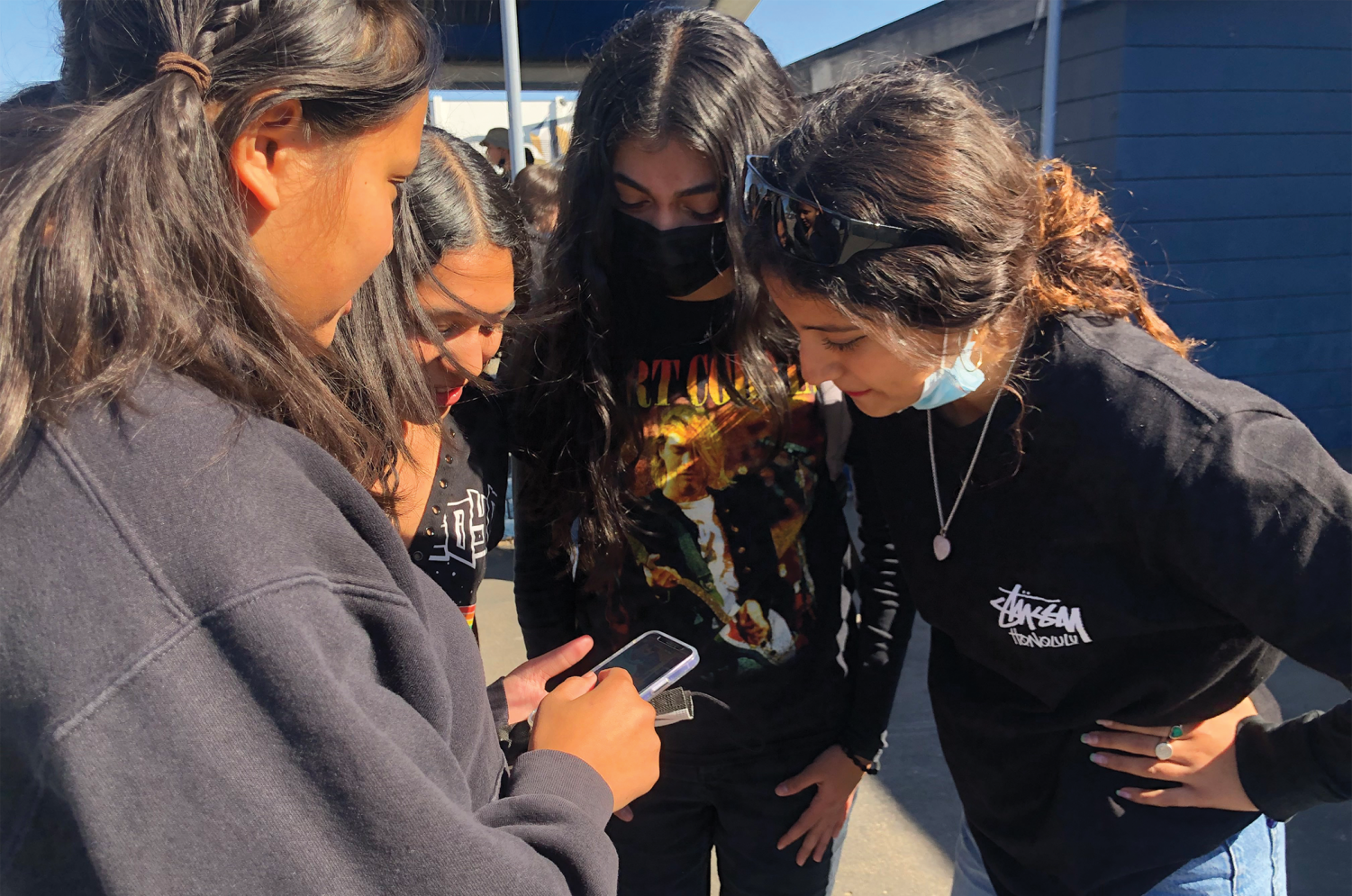Trapped in the trend
A look into TikTok's growing impact on BVH
February 16, 2022
“Trends start here” is how the TikTok social media app markets itself. What the slogan fails to recognize are the endless possibilities the app offers. TikTok is what has users questioning their parenting skills, dying their hair three different colors in one month, starting multiple small businesses and inciting political riots. Though TikTok videos have a maximum video length of three minutes, users have managed to create hyper-specific content for various hyper-specific communities. It connects someone from Bonita Vista High (BVH) to someone in the rural areas of Australia across oceans and continents, almost ten thousand miles away.
On a smaller scale, is the effect that TikTok has on the lives of its creators, BVH alumni, and BVH culture. The app gives users the opportunity to speak their minds and be heard by millions. They can express their true personalities and connect with those with the same interests in niche communities such as #BookTok. It also tends to encourage reckless trends that encourage users to record themselves committing theft or physical assault which has had devastating effects on the BVH campus. Not only does the algorithm encourage rash behavior, but users have found the app to be extremely addictive.
However, the negative effect of these trends does not deter BVH students from using the app. A poll conducted by the Crusader on Feb. 2 shows 72 percent of the 909 students polled use TikTok, with over two-thirds of respondents agreeing to an extent that TikTok is addictive. With this in mind, important questions are presented: is TikTok beneficial? And do its positive effects give us reason to ignore the harms? These are the questions that prompt dissection.
Impacts on culture
“[TikTok] could be an instrument of positivity or negativity,” Bonita Vista High (BVH) Principal Roman Del Rosario Ed.D. said.
The social media platform, TikTok, has both favorable and disadvantageous effects on BVH’s school culture, students, teachers and staff. Popularly used by students, a poll of 896 students conducted by the Crusader the week of Jan. 31, revealed that 74 percent of BVH students actively use TikTok.
Seniors Samantha Bianes and Mia Gonzalez are avid users of TikTok and mentioned that they use the application for several hours every day. They use the platform as a means for entertainment and educational purposes. Both of them enjoy using TikTok to further their passion for literature through the help of #BookTok—“the go-to hashtag for all content pertaining to books, reading, writing, and everything in between,” according to the official TikTok website. Under this feature, TikTok users can read book reviews, as well as learn about writing tips, plot reenactments of novels, and more.
“[TikTok] is an outlet and an opportunity to connect with different groups of people. I’m very much a bookworm. Being able to connect with other people who share that passion is why I love TikTok,” Gonzalez said. “It’s entertaining to see different aspects of the world environmentally, culturally, politically [and] socially [through TikTok]; it’s a good way to learn more about stuff.”
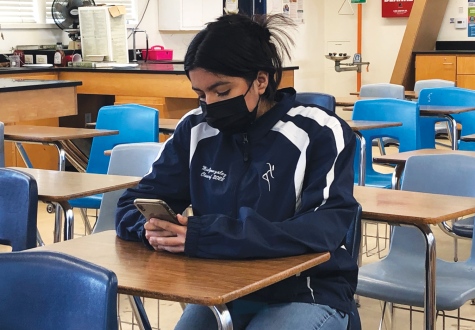
Bianes primarily uses TikTok to watch video clips about movies, TV shows and book recommendations. Aside from reaping personal benefits, Bianes, BVH’s Associated Student Body (ASB) Secretary, described that TikTok helps ASB commissioners plan spirit week activities.
“ASB used a TikTok trend for [one of the] spirit days where [students] would bring anything but a backpack. The only reason we got that [idea] was [because of] the trend on TikTok,” Bianes said. “There are other positive [trends] that are about [topics] like body positivity.
As for English 10 Accelerated and Drama teacher Rosamaria Sias, TikTok is her form of “escapism”. Similar to Bianes and Gonzalez, Sias uses TikTok to be entertained and educated about various subjects. Sias shares the entertaining content she finds from TikTok with her family.
“[TikTok] is my place to escape from my reality if I’m stressed or when I want a few minutes to myself to just scroll [through the app] aimlessly. If I’m lucky, I’ll find a really funny video that I will share with my husband and my kids and we can laugh together,” Sias said.
Furthermore, Sias integrates the lessons she learns from the app into her day-to-day life and school lesson plans. On TikTok, Sias shares a passion with several creators who enjoy cooking and sharing recipes online. She also follows other teachers on TikTok where she gets inspiration about different class techniques and programs.
“I love learning new recipes and [the TikTok video] is done in one minute which is awesome. I follow other teachers and so anything that they post, I use in the classroom,” Sias said. “[Using TikTok] is my way of communicating with and having fun with my family.”
On the other hand, the increasing popularity of harmful trends and challenges plagued schools nationwide, including BVH. In an article titled “Another contagion spreads”, the Crusader reported that on Sept. 16, BVH Assistant Principal Esther Wise sent an email to the BVH community via Jupiter Grades regarding the ‘Devious Lick’ TikTok challenge. Wise forwarded a letter from San Diego County Superintendent of Schools Paul Gothold Ed.D. explaining that the TikTok challenge encourages individuals to “steal or damage school property” and has garnered approximately “11 million views and many re-creations.”
Across San Diego County, Gothold described that students have gone to extreme measures by stealing “soap dispensers, toilet paper holders, microscopes, signs, a box of hand sanitizer, teacher’s car keys, damaging drinking fountains, toilets, fire alarms and more.”
At BVH, this resulted in stolen building numbers that serve to identify the rows of classrooms in the 200 and 500s—certain building numbers still missing today. Moreover, Del Rosario mentioned several other trends that involved acts of vandalism and assault, such as stealing and “slapping a teacher”. The BVH staff believed that these challenges were connected to TikTok.
“There’s been anxiety about potential [student] misconduct [amongst staff members]. On top of all the other stresses that teachers have to worry about, that [news about TikTok trends] adds another layer of stress,” Del Rosario said.
Upon learning the news of harmful TikTok trends, Health Science teacher Shannon Bruce felt “very blessed” because she and her classroom were not affected by any of the TikTok trends. She heard instances of other teachers getting some of their items taken, but she remains grateful and safe because of the trust she has for her students.
“I never had anything missing from my room [and] I was never punched in the face. I didn’t experience any type of anxiety with it. I trust my students, I think they’re amazing and I feel like my students will step up for the better. I don’t know about other people’s rooms [or] what culture they have created, but in my room, I just feel like I’ve created a family,” Bruce said. “My students make me feel safe, and I never feel like they would do something intentional to harm this environment.”
Del Rosario described that BVH teachers and staff serve an important role in guiding students in the right direction when it comes to TikTok usage. He hopes that teachers and staff participate in a discussion with students about how to utilize the application effectively and in a positive manner.
“We need to continue to have that conversation about how we prepare our students for the future. We, my generation, your teachers, grew up in a different time, so we’re preparing you [students] for a future that’s very uncertain,” Del Rosario said. “ [TikTok] is a fun way to take your mind off [of things or to] take a break instead of watching TV. But, I’m very cautious about the long-term impact that [TikTok] has on all of us teachers.”
Moving forward, Sias encourages her students to utilize TikTok as a form to express themselves creatively. She hopes for students to create content that promotes a positive message and demonstrates “Baron pride”.
“I hope that students are using [TikTok] for its intended purpose—to express their creativity. Whether that’s doing these funny skits or tutorials, I want them to showcase their talent because others might find that humorous, entertaining or enlightening,” Sias said.
As a graduating senior, Bianes wants the BVH community to be more cognizant about their decisions and actions. She wants fellow BVH students to “Be smart about what you’re doing. Don’t do anything that you’re going to regret in the future.”
Amidst the challenges associated with TikTok, Gonzalez believes that if used appropriately, TikTok can further an environment and culture that are community-oriented, inclusive, and welcoming.
“In a lot of ways, it’s [TikTok] brought a lot of people together because it’s such a universally used platform. I’ve seen more of that positive unity come from it [TikTok] rather than this separation between students,” Gonzalez said.
Impacts on mental health
TikTok has become a prominent part of students’ lives at Bonita Vista High (BVH). Through endless videos and casual scrolling, students experience the positive and negative effects that social media platforms like TikTok can have on their mental health.
Stimulation from social media apps like TikTok can cause students to develop mental health conditions. According to Health Science teacher Shannon Bruce, depression is “when someone feels a lack of self-worth, lack of self-value and sadness.” Bruce also explains that attention deficit disorder (ADD) is when someone cannot focus even if they want to. As an advocate for medication, Bruce encourages those suffering from mental health issues to seek therapy, medical help, and prescription medication.
“When they sit down to read [a] comic book [they waited a year for], they are constantly distracted. It’s very frustrating for someone who has ADD or [attention deficit hyperactivity disorder] ADHD which adds [to] the hyperactivity factor,” Bruce said.
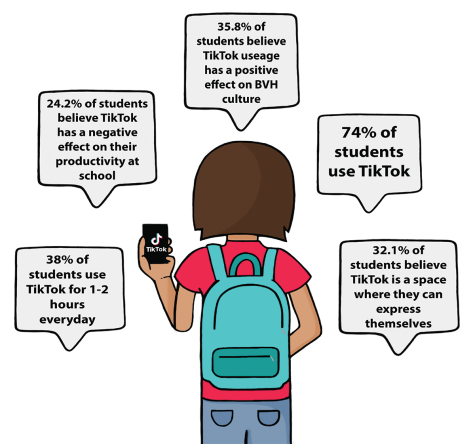
Furthermore, Bruce believes that ADD is on the rise not only for kids but also for adults. ADD used to be a childhood disorder but now adults are developing ADD too. One reason is that life is moving at a quicker pace now, especially with phones.
“There’s no more dial-up internet. Everything’s quick, now we are on 5g. So, our brains are not able to keep up with the technology and now adults and children are now evenly likely to develop ADD [and depression],” Bruce said.
Everyone is prone to developing mental health conditions, but Bruce explains that our youth is more vulnerable because they are still developing. She says there is a “100%” correlation between the usage of TikTok and students’ mental health.
“You’re developing character, you’re developing intelligence so social media factors are very detrimental,” Bruce said.
Scrolling through multiple 15-second clips does not sound like a lot of time, but those 30 minutes can turn into an hour which then turns into 3 hours. The cycle just continues. For senior Anna Maya, she sees herself grabbing for her phone first thing in the morning, or swipes through the TikTok videos during class. She feels guilty when she is on the app for too long because she knows there are more important things that have to be done.
“You’re having a blast [one] moment, [then] the second you’re done, you feel guilty for it. You only feel guilty if you know you’re not supposed to be doing it,” Maya said. “If you accomplish tasks you have to do before you sit down you can really enjoy yourself watching [TikTok]. It happens to me, I get home, hop on Tik Tok and then two hours [pass by].”
TikTok is an addictive social media platform, Maya conveys. She has noticed that after years of using the app, it has affected her productivity in school, her priorities, and the knowledge she gains in class. She catches herself scrolling through TikTok instead of studying or doing homework.
“It’s almost like a drug, the more you use it, the more you feel deprived of it. You can’t even take a deep breath or get ready to wash your face before opening the app. It is an addiction. It’s almost like serotonin and dopamine-producing in your brain. I always find myself just opening TikTok and time passes by so much faster than what it’s supposed to,” Maya said.
Also, Bruce elaborates that the unrealistic beauty standards that are portrayed on social media platforms like TikTok can give students the wrong idea. They might feel pressured to look a certain way or feel insecure because they see these supermodels or influencers on TikTok.
“All these filters give us unrealistic perceptions of life, but then you think that’s the way you should look. So, you go to a plastic surgeon because you want to look like a picture of yourself filtered. It’s giving people an unrealistic self-image and it’s very upsetting,” Bruce said.
Not all information found on the site is considered healthy. Maya continues that when she and others see models like Kendall Jenner on TikTok they can start feeling bad about themselves and their bodies.
“It’s obviously very overwhelming for the brain, especially a teenage one. In my opinion, it makes you think about so many things, causing a lot of overanalyzing and questioning [about] why your life doesn’t look like other people’s lives. In reality, it [TikTok videos] can be completely opposite but how it’s portrayed can make it look relatable and realistic,” Maya said.
Freshman Elijah Alarcon has felt “jealous for not looking” like people they see on TikTok. They would really like to be as smart as some people on the app but they know that they have to “fight their own battles” and that they are themselves. They try to not let these negative thoughts affect them because it’s their life, not anybody else’s.
“Don’t strive to be like other people because there’s never going to be a person exactly like each other. You have to strive to be the person that you want to be, the person that you aspire to be,” Alarcon said.
As a TikTok creator, Alarcon has faced many issues with hate comments. However, they have learned to ignore them and accept that this is the reality of social media. They encourage others who are going through the same thing to get off the app and know that those who are writing these comments “could be doing something nice” but they are taking the time out of their day to make others feel bad, so “take it with a grain of salt.”
“It doesn’t really matter what people say or what people comment. If someone comments hate comments or a nice comment, I don’t really care because I don’t know them. They don’t really have as much significance in my life,” Alarcon said.
Besides the negative aspects of TikTok, Bruce also expresses that through this app there has been more advocacy on issues like body positivity and womanhood. For instance, the Me Too movement and Anti-body shaming movements have allowed many to grow confidence in themselves and use their voice for something positive, something they believe in.
“Now people feel like, ‘I belong’, ‘I see this on TikTok, I belong’. I think that’s actually something [I’ve seen that] is positive. It just depends on what you’re looking at. If you’re looking at healthy content, versus unhealthy content, I think [TikTok] could be a little bit more positive than what people think,” Bruce said.
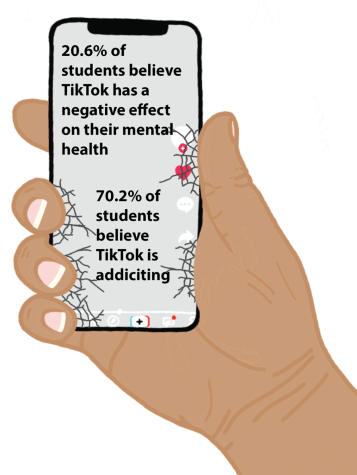
Other positives Maya has seen are the amount of information that students can receive from TikTok. She uses the app to find advice from dieticians, others who are struggling with mental health, life hacks, and relationships tips.
“It makes their teenage mind think—I hope I can speak on behalf of a lot of other teenagers—for themselves and search for information in whatever it is they want to see [or learn],” Maya said.
With a lot of information, Maya is concerned about the misinformation that students are receiving about mental health. There are videos found on TikTok were advertisements or TikTokers try to diagnose viewers. Maya describes the videos saying, “‘Do you find it hard to concentrate in class? Maybe you have ADHD.’”
“[Viewers] think ‘oh, wait, I relate to that, maybe I do have ADHD,’ but [you have to ask yourselves] who is this 18-year-old? What is their credibility? What expertise do they have? This connotes the idea of being able to self-diagnose yourself and jump to conclusions without looking for psychiatric help. I think that’s very dangerous,” Maya said.
TikTok has been a huge part of Maya’s mental health journey. During the COVID-19 pandemic, she was diagnosed by a psychologist with severe anxiety. Her psychologist believes Maya developed this through the time spent at home social distancing. Maya says in the certainty that, “she wouldn’t doubt TikTok” was a cause for her developing anxiety.
“In school, I never showed symptoms of ADHD, but my psychiatrist and psychologist both say that my brain gets overstimulated over the content I see on the phone,” Maya said.
Mental health is scary and some may feel that they are experiencing it alone. On the contrary, Maya shares her realization that there is a community on TikTok that is dealing with similar mental health issues. She feels thankful that mental health is being talked about because it can help many people.
“There are other people like you, fighting and struggling every day to overcome whatever mental illness they have. I believe that, especially during the quarantine, there was no way for you to connect with your friends, but then you’d hop on Tik Tok and see someone expressing their mental health issues and you’re like, ‘Okay, I’m not alone.’ They’re going through it and it’s okay. If they’re pushing to get through it, I can push to get through it. That’s incredibly amazing. This community is something so valuable,” Maya said.
TikTok Creators Speak
Ally Guerra
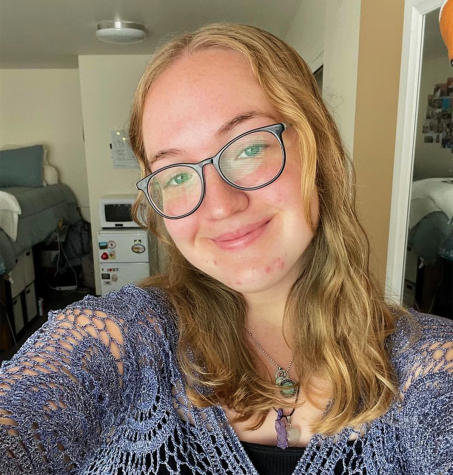
“I just made random videos, got lucky, and got picked up by the algorithm. That’s how I got my following. Nothing was intentional with my TikTok account,” Bonita Vista High (BVH) alumni Ally Guerra said.
Guerra graduated from BVH in 2021 and is now pursuing a career in film and television at Chapman University in the Dodge College of Film and Media Arts. Even back when TikTok was referred to as Musical.ly, Guerra was making lighthearted content on the app for her entertainment.
“I always had the app before, when it was Musical.ly and then I just made TikToks for fun. It wasn’t until March of 2020, where I actually had [a] viral video,” Guerra said.
She now has 32,000 followers as @allyholland13, though according to Guerra the number often fluctuates. Her growth came in sudden bursts of exposure on the For You Page of teens within the film and music niche.
“I made a TikTok about meeting celebrities and YouTubers. I didn’t think anything of it [but] it got around over 2 million views,” Guerra said. “[It] was crazy, because I gained 17,000 followers overnight. [It was] so weird seeing my TikTok blow up like that.”
Despite the rapid change in her viewership, Guerra stayed true to her initial intent on making content “just for fun.” She remained consistent in the casual nature of her TikTok, regardless of the thousands of eyes on her.
“I’ve had a few other viral videos, but nothing compared to that [initial growth],” Guerra said. “I just make [content] for myself and people [with similar interests]. I don’t think of [the] following I have.”
Guerra’s content is centered around fandom culture. She posts lighthearted videos about specific films or musicians that she is a fan of, garnering a following of people with a similar interest in pop culture. She believes putting an emphasis on her interests adds a layer of authenticity to her content.
“I go along with different things that are trending [and] I’m interested in,” Guerra said. “For example, music and film. Some things I really like are Spider-Man and Harry Styles which are very popular in my demographic. That’s the audience I reach towards.”
She finds TikTok to be unique in that way. It merges various different musicians, movies, and fandoms in one pop-culture melting pot. According to Guerra, TikTok is a place for her different interests to meet at a crossroads.
“I make little vlogs or fashion videos. There’s so much that [I can] I do [so] I just make what I want to make,” Guerra said.
At the center of Guerra’s motivation to consistently make TikTok content is the desire to have a carefree creative outlet. Creators on the app have cultivated a laid-back environment that makes it a comfortable place for self-expression.
“I love expressing myself on the app. [On] a lot of other platforms, it’s a little bit hard to do that,” Guerra said. “It’s really fun to have that outlet for me to express myself differently from Instagram or YouTube.”
Even with TikTok’s overall light-heartedness, Guerra has experienced some harmful effects of the app. Just as TikTok is a melting pot for pop culture, the algorithm can also cause negative thoughts to manifest within young people.
“High school is the time in your life where you’re going through a lot of change and you’re also dealing with a lot of emotions, such as being self-conscious,” Guerra said. “[TikTok] can get harmful [because you are] comparing yourself to others on the internet.”
Guerra recognizes these effects within other creators of the app and her own mentality. She has noticed how some creators post less than they used to, reflecting the harmful effects of the abundant negativity found on TikTok. Additionally, she speaks about how the app has worsened her body issues.
“I still have body issues with the app because I feel like there’s so much negativity on it to a certain extent,” Guerra said. “Sometimes body issues can come into play if you see someone who looks like a different size than you.”
However, Guerra makes a conscious effort to move past the toxic elements of TikTok; detaching herself from her follower count while remaining true to her personality. According to Guerra the best way to handle growing a TikTok following is to continue “putting out what you love” and leave the worries of trying to “blow up” behind because the TikTok algorithm is a mystery.
“Followers [are] just a number. 32 thousand [is] just a number so I don’t see the point in taking it too seriously,” Guerra said. “For my content, I just take it very lightly and casually. That’s the best mindset to have.”
Jessy Fontanilla
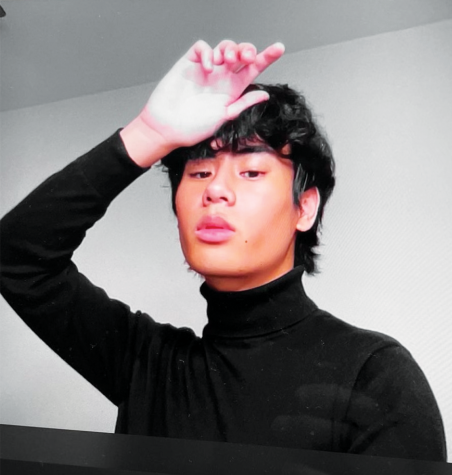
“I saw someone’s TikTok from school [go] viral. I wanted to live through that, [it] seemed [like] so much fun. I wanted to do it, so I just did,” Bonita Vista High (BVH) alumni and TikTok video creator Jessy Fontanilla said.
Fontanilla graduated from BVH in 2020 and began making TikTok content in 2019. In the span of just under three years, Fontanilla has garnered a following of 2.1 million people on his TikTok account @39jeshi. Additionally, he accumulated 75.4 million likes on his videos. He creates comedic content based on his experiences in a video game called Roblox, an online platform where users can create and play video games. His videos feature snippets of strange interactions with other players in the game.
“TikTok is a very powerful platform. There’s a lot you can do on it, compared to Instagram, or YouTube,” Fontanilla said. “[For example], YouTube has a very low engagement rate, unless you’re already popular. So I didn’t think about becoming a YouTuber, because it’s really hard.”
Fontanilla is grateful for his platform, specifically because he is able to influence a large group of people. The platform he built on the app gives him the opportunity to represent Asian-Americans within the gaming community on TikTok.
“I’m happy to have a huge influence on people because I don’t think there’s—in my particular niche—a lot of Asians,” Fontanilla said.
Often, he has interactions with other users about his Filipino heritage, such as his viewers asking him to speak Tagalog. TikTok allows him to share his experiences as an Asian-American, as he has seen others do on the app.
“There’s a lot of things that TikTok bring[s] up that no one normally talks about,” Fontanilla said. “I feel as if we learn about many other cultures or what’s right from wrong [from TikTok]. It has a huge impact on generations.”
Using TikTok to expand his audience has turned out in his favor. His account continues to grow each day. Towards the end of 2019 and before the COVID-19 pandemic, Fontanilla had around 200,000 followers. His account has grown tenfold in just over one year, opening doors for him in other careers, outside of video making.
“I don’t know if I should say this,” he smiles shyly, “but with the introduction of my social media, I have been scouted by modeling agencies, so I want to expand on that.”
However, having a large platform is not all open doors and endless pathways. There is a darker and more constricting side of TikTok fame that Fontanilla has experienced.
“In the beginning, when I started my TikTok I would always be super wary of what people thought about me,” Fontanilla said.
He describes his time in the spotlight as if his moves are “being watched,” especially when he live-streams his gaming sessions in a raw, unedited form. The pressure of 2.1 million eyes on him emphasizes personal insecurities he struggles with.
“I’m a person who hates people thinking I’m bad or annoying,” Fontanilla said. “[With a big platform], you will see comments that will hurt.”
From his observations, toxicity can run rampant on the platform. Fontanilla describes the unfortunate experiences of other creators when faced with hate and praises their ability to combat the negativity.
“I give praise to social creators because of how thick their skin is. It sounds really cliche, but they’re strong because people are constantly tearing them down,” Fontanilla said.
Being in this position for over a year, Fontanilla has learned to deal with negativity, similar to the creators he looked up to. As he navigates the responsibilities of a large platform, he comes to discover the key to holding up against the pressure.
“You have to watch what you say. You can’t say anything negative, you have to keep it neutral,” Fontanilla said. “I always wanted people to like me [so I] learned to grow a thick skin and not let anything hurt [me].”
Suzy Dean
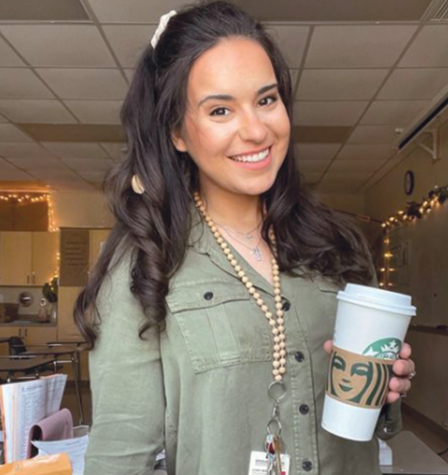
“I never thought this would happen. I had no goals. My friends made TikToks during quarantine and I started to wonder what the hype was about,” 12th grade English Teacher Suzy Dean said.
Dean is a teacher in Southern Florida who uses her Tikok to educate her young audience about the English language, while also spreading a heart-forward teaching philosophy to other teachers. Her account @msdeanlovesyou on TikTok has garnered over 400 thousand followers as of Feb. 4 of this year.
“I posted my first video in December 2020, but I didn’t start consistently posting content until around August 2021,” Dean said.
The content she created early on largely revolved around grammar. Now, she uses her videos to teach others about teaching methods she finds useful. Her content slowly transformed from strictly educational lessons for students to more lighthearted videos about unconventional teaching methods for other teachers.
“[In] my first videos I [encouraged] people to start using apostrophes and the Oxford comma correctly,” Dean said. “[Now], my content has turned into glimpses of my teaching philosophy. [I am] very heart-forward and I integrate this into my classroom. I don’t think this is the norm for teachers in high school.”
Dean never intended to become a teacher, initially aiming to earn a Ph.D. in counseling psychology. To save funds for her Graduate Records Examination after her senior year of college, Dean decided to apply to Teach for America; a temporary job. However, after her first year of teaching, she fell in love with her profession.
“I found that showing this [heart-forward] side of my personality [on TikTok] not only made my job more enjoyable, but it made my relationships with my students much more meaningful,” Dean said.
Her sincerity and passion for teaching are evident in the content she creates. TikTok users can connect to her videos and apply it to their own lives.
“My brain does not comprehend that so many people care about the content that I make,” Dean said. “I really hope that my videos [give] teachers permission to show their personalities in class.”
The unexpected growth of her TikTok following has sent Dean into uncharted territory. Becoming “TikTok famous” has implications she had not considered prior to her fame. After her first 1 million collective views, Dean became a part of the TikTok creator fund. The creator fund gives content creators money based on the views they get on their videos.
“While I didn’t intend to have a following or make money off of social media, I absolutely want to take advantage of this opportunity,” Dean said. “When I don’t post consistently, I lose followers and money. I feel [more] pressure because so many more opportunities have opened up for me to make this another income stream.”
Dean has offset that pressure by adopting a goal-setting mindset. At the beginning of this year, she planned to make 4-6 videos each week and has a running list of potential videos. With these goals in mind, Dean now has much more on her plate, spending time planning, making, and editing her videos.
“I have to maintain a ‘persona,’” Dean said. “While TikTok allows users a more intimate method to being authentic, it becomes very hard to be honest when you earn a following; people just aren’t as supportive because they want to be entertained.”
As her following grows, Dean has found a method to deal with these TikTok “trolls.” She only looks at a few comments on her videos to maintain audience connection while also caring for her mental health. More important than the negative comments, she sees the philosophical discoveries she has made about teaching in her time on TikTok.
“[TikTok] has solidified my understanding that educators can make a profound impact on individual students. I realize that my job is much more than [just] a job. It is a responsibility that I take very seriously,” Dean said.
Dean has also found TikTok to be beneficial in other ways. Considering the TikTok algorithm caters to audiences with similar interests, teachers make up a large portion of viewers on the accounts of Tik Tok famous teachers like Dean.
“I benefit from everything [on TikTok]; from outfit ideas to lesson ideas, as well as listening to teachers with the same struggles as me. It increases awareness for student needs and helps teachers to feel less alone,” Dean explained.
Overall, teacher platforms on TikTok educate audiences on both sides of the relationship. Teachers learn from other teachers on the app and students form a new connection with their teachers—a meaningful relationship that Dean continues to develop with her own students, thanks to TikTok.
“I hope that students get a little more insight into how much some of their teachers might care and think about them,” Dean said. “I work so hard for my kids and I think about them always.”
